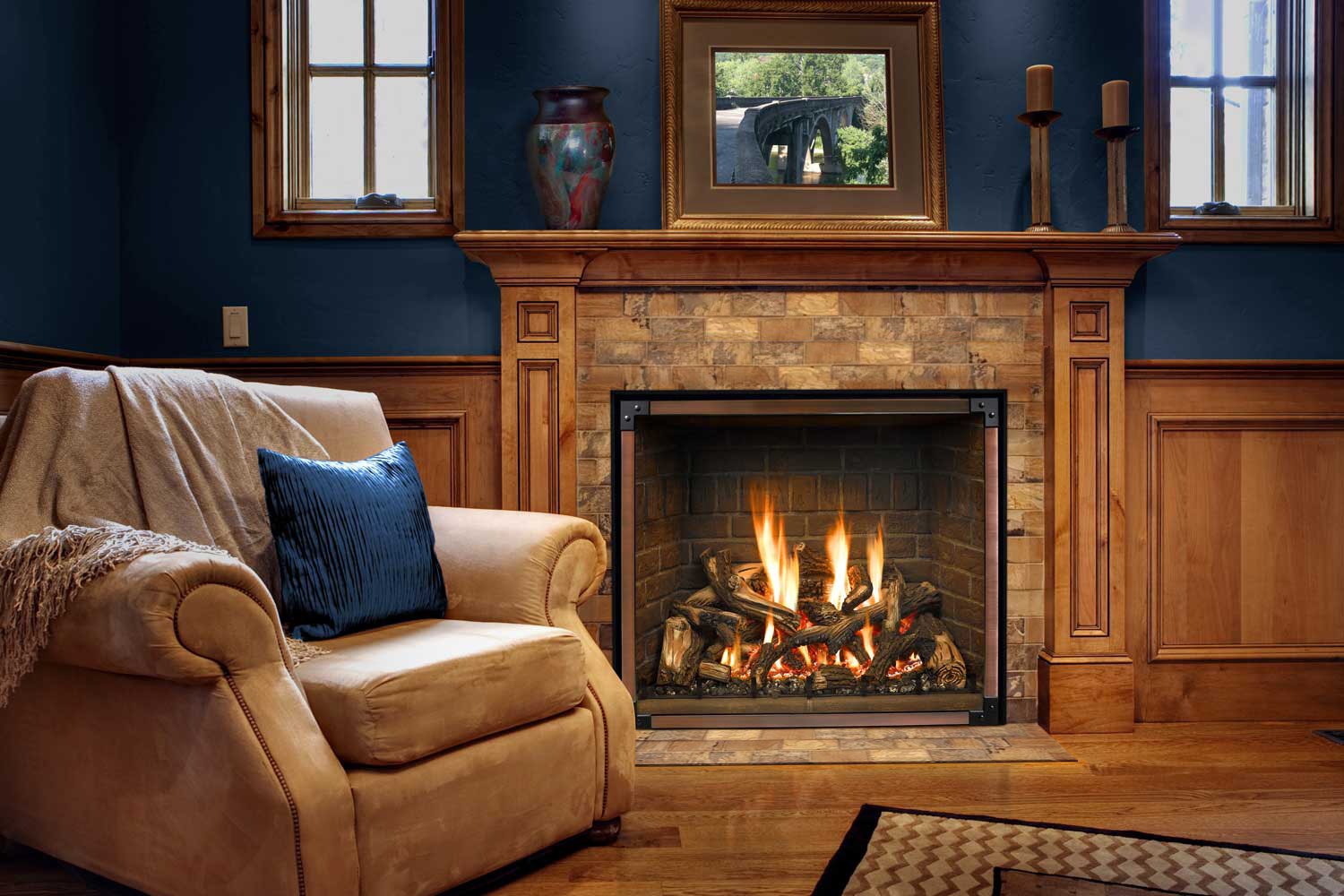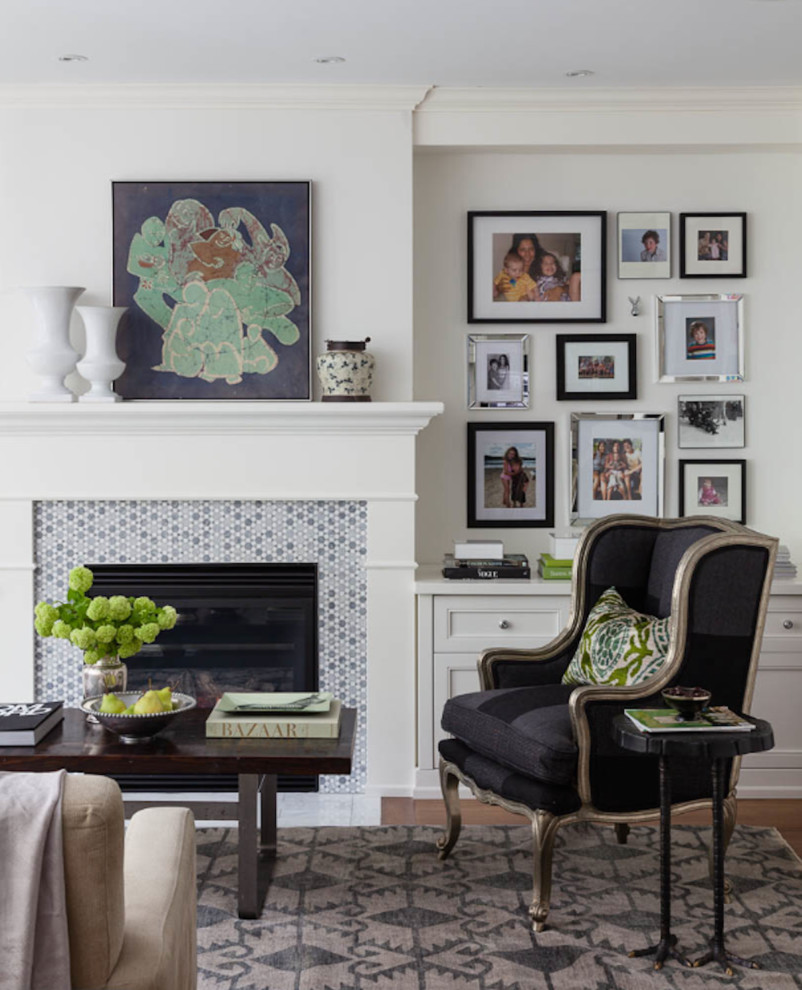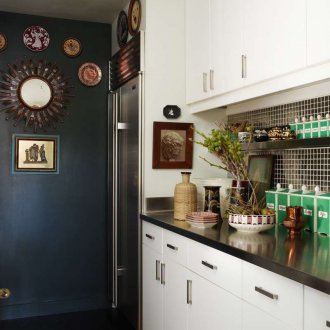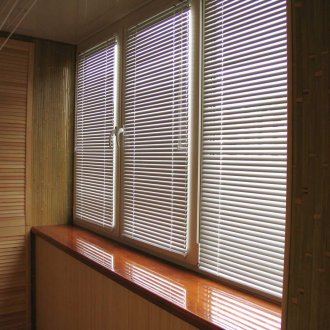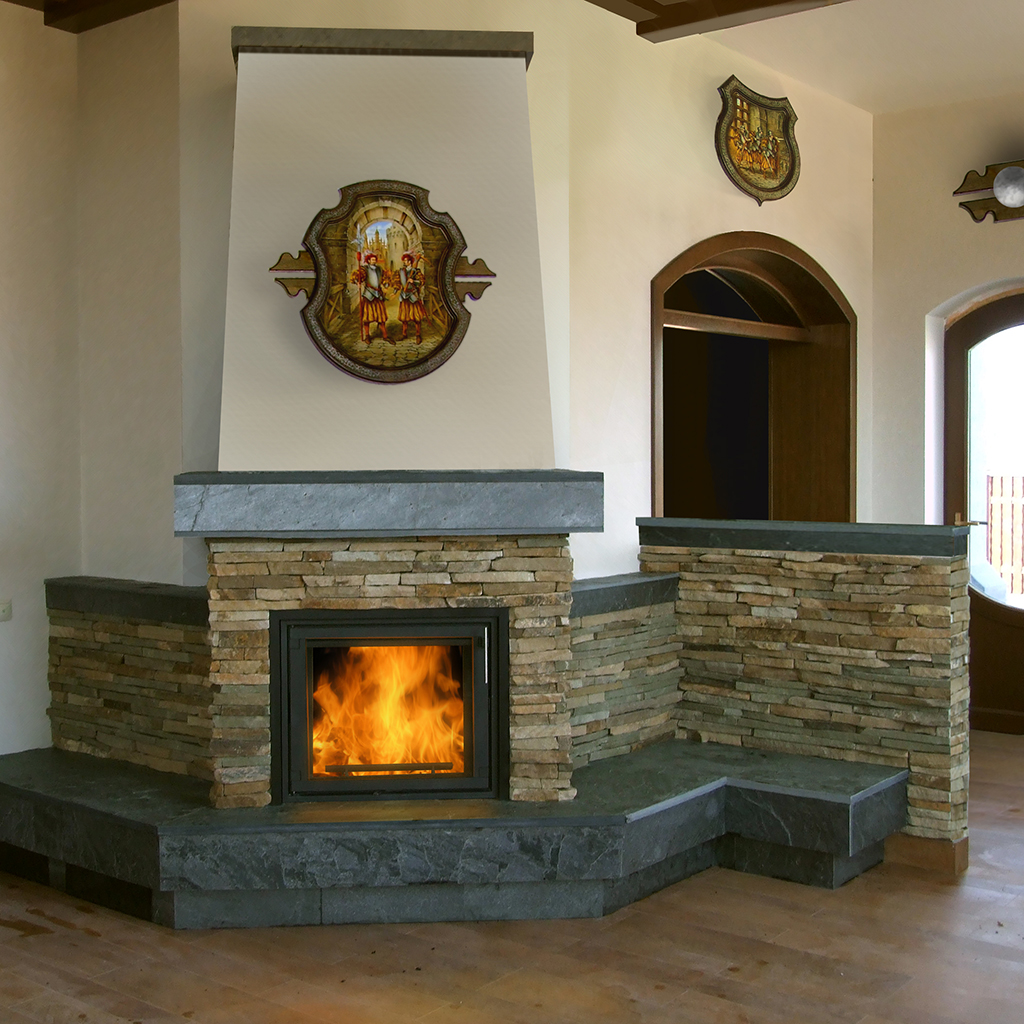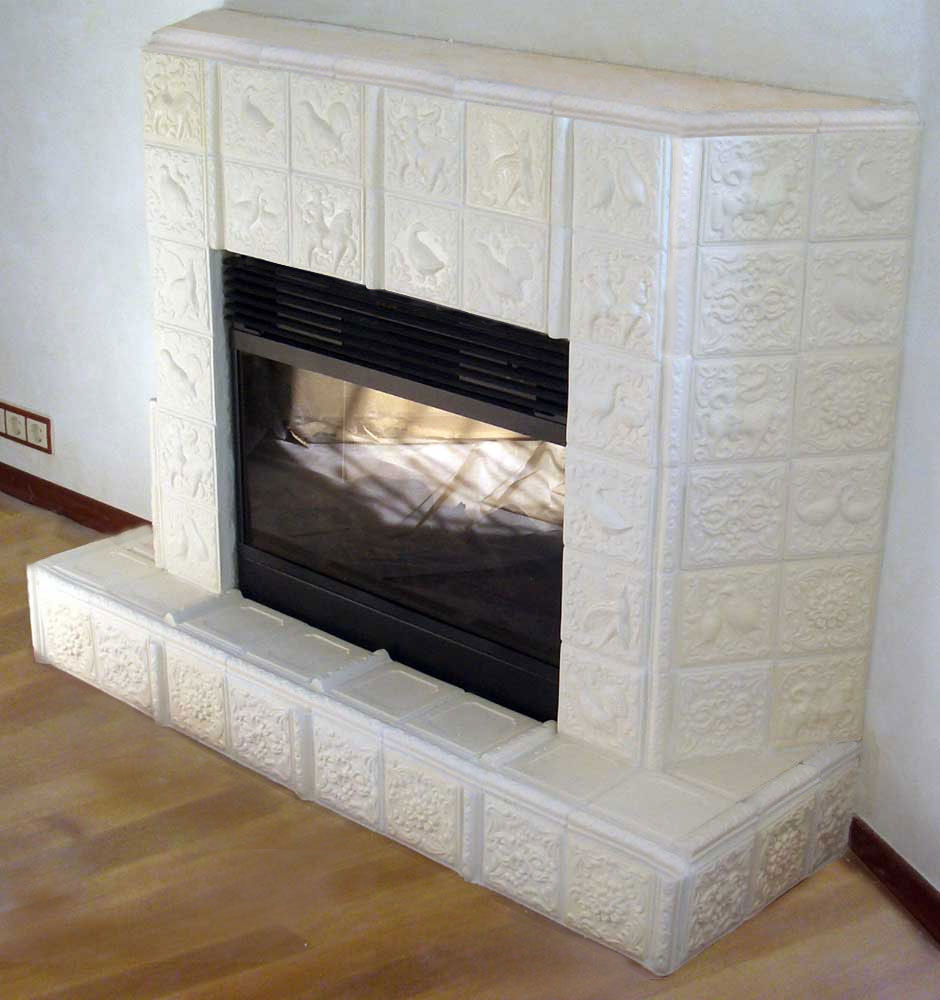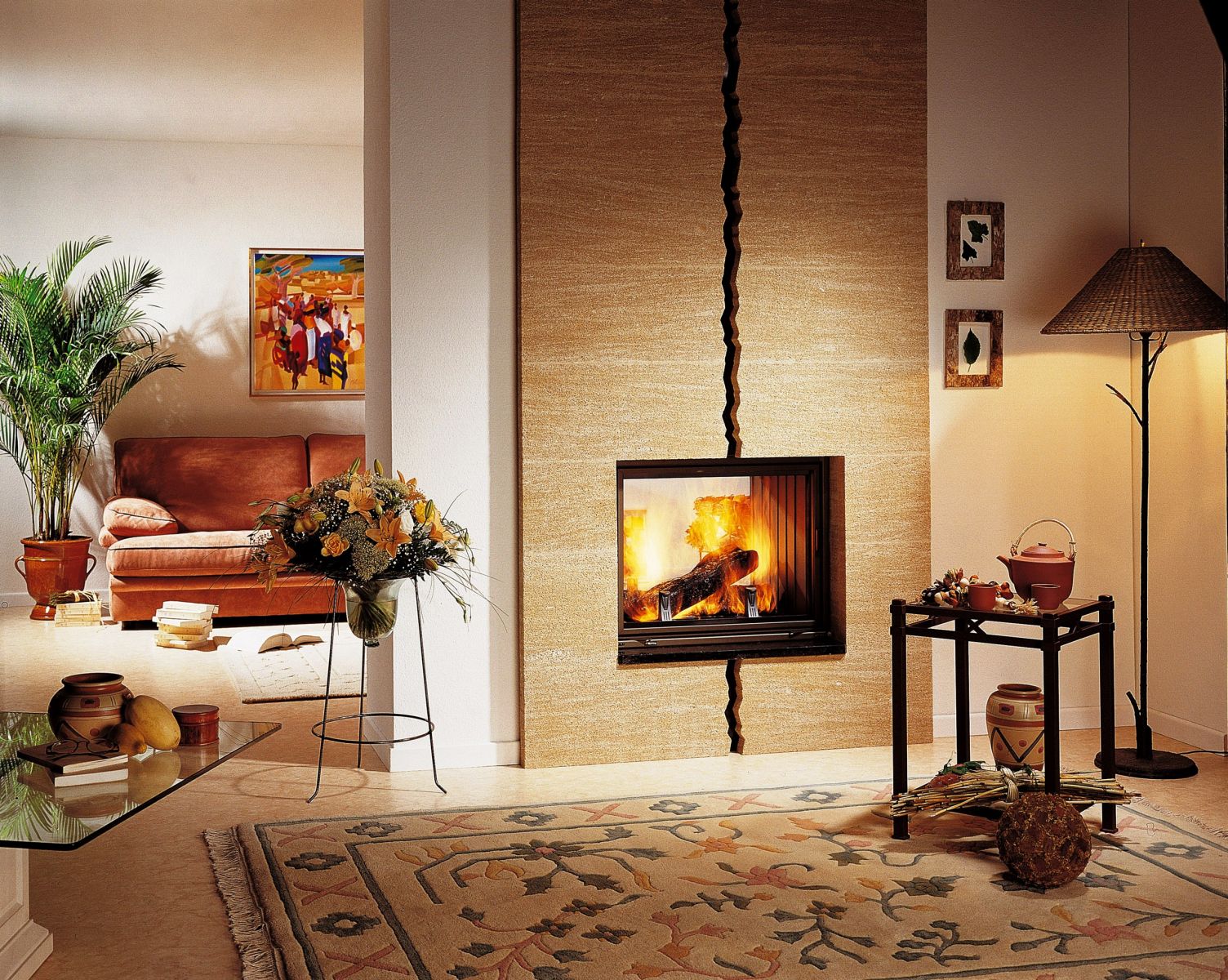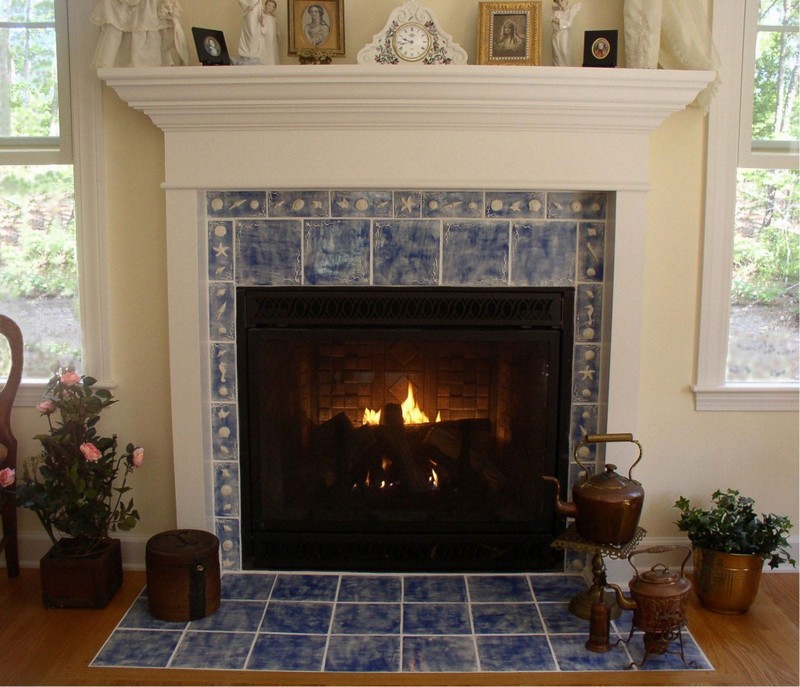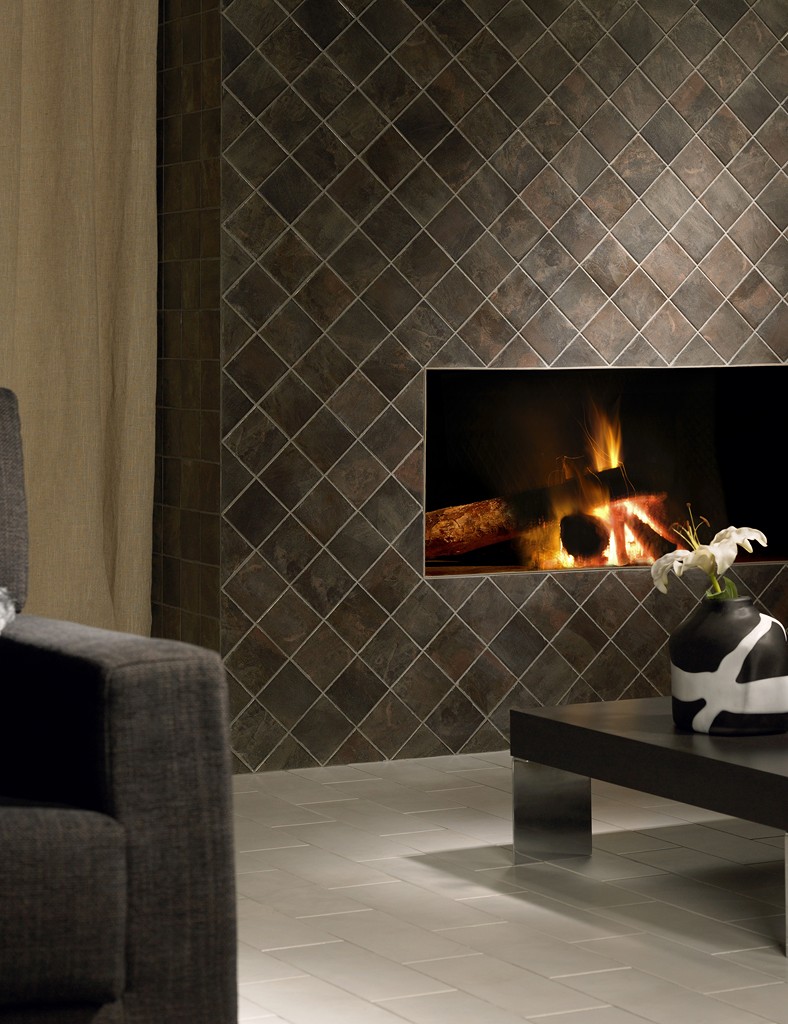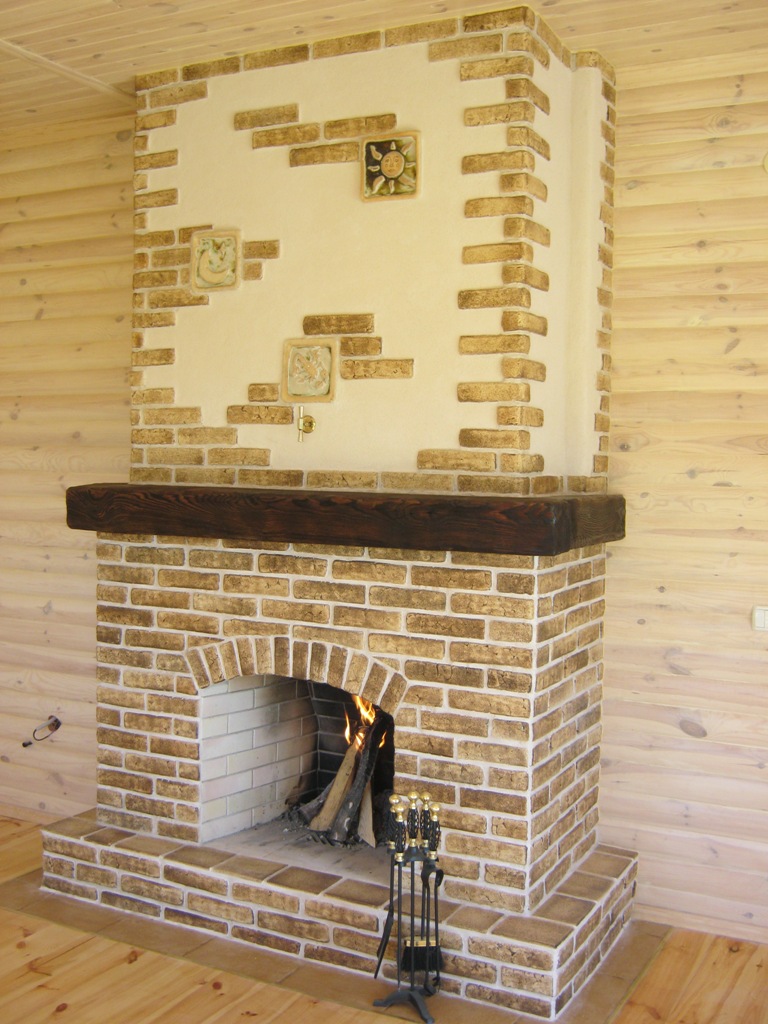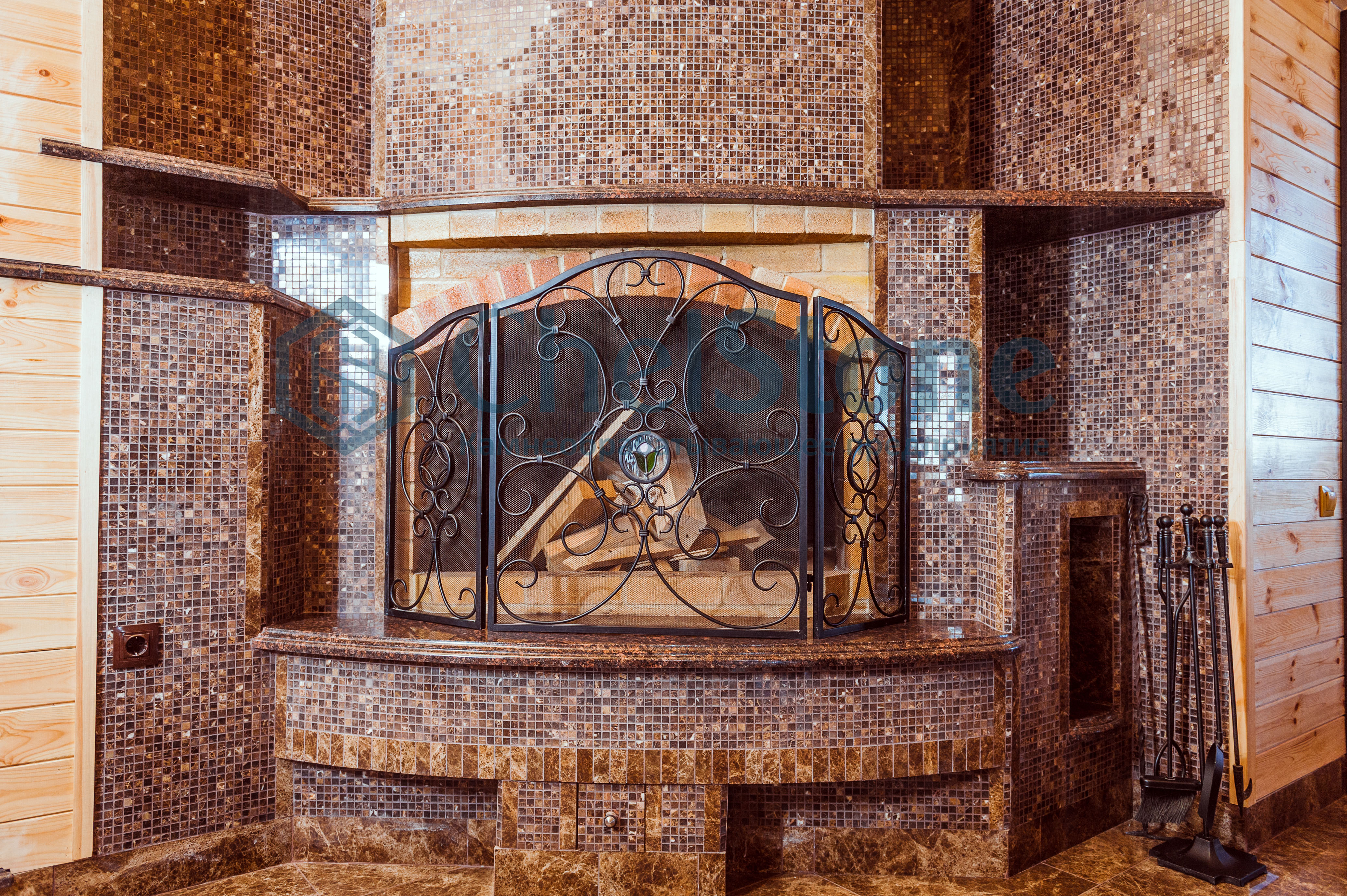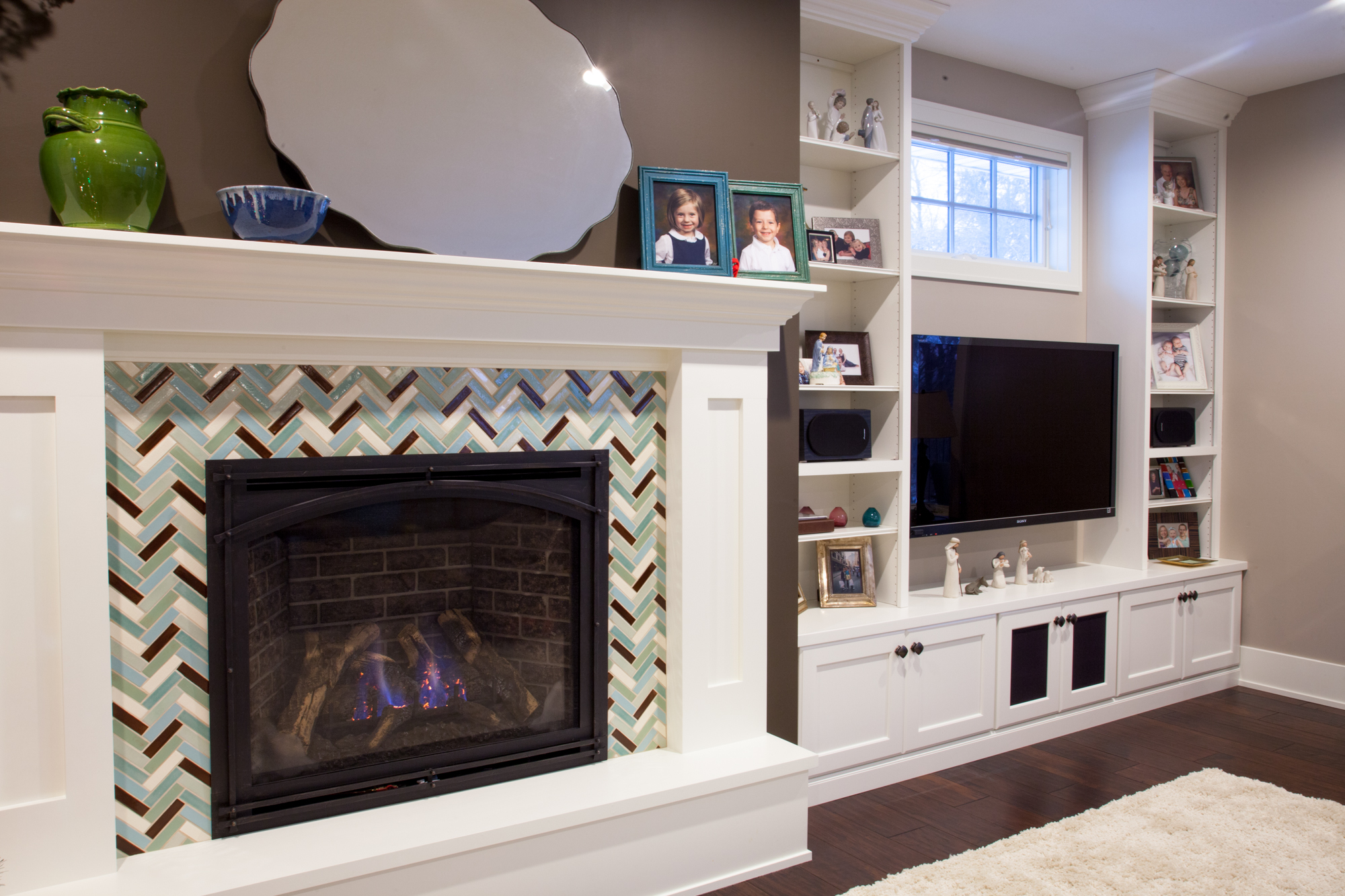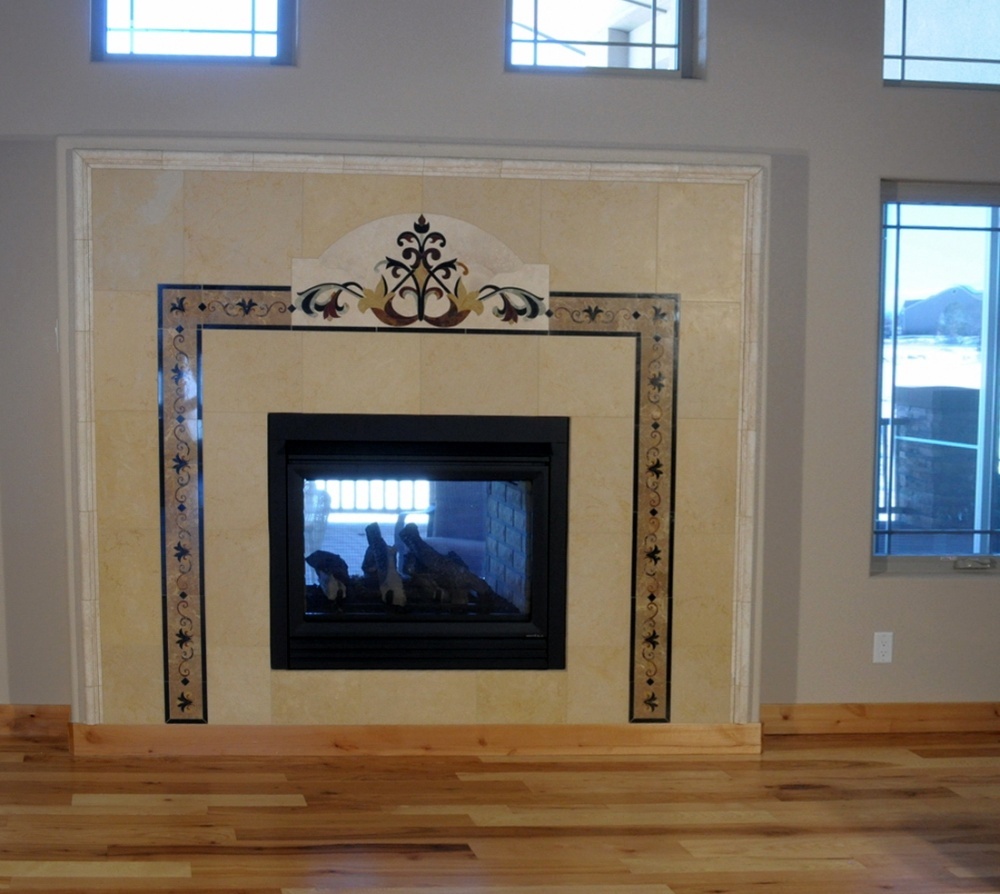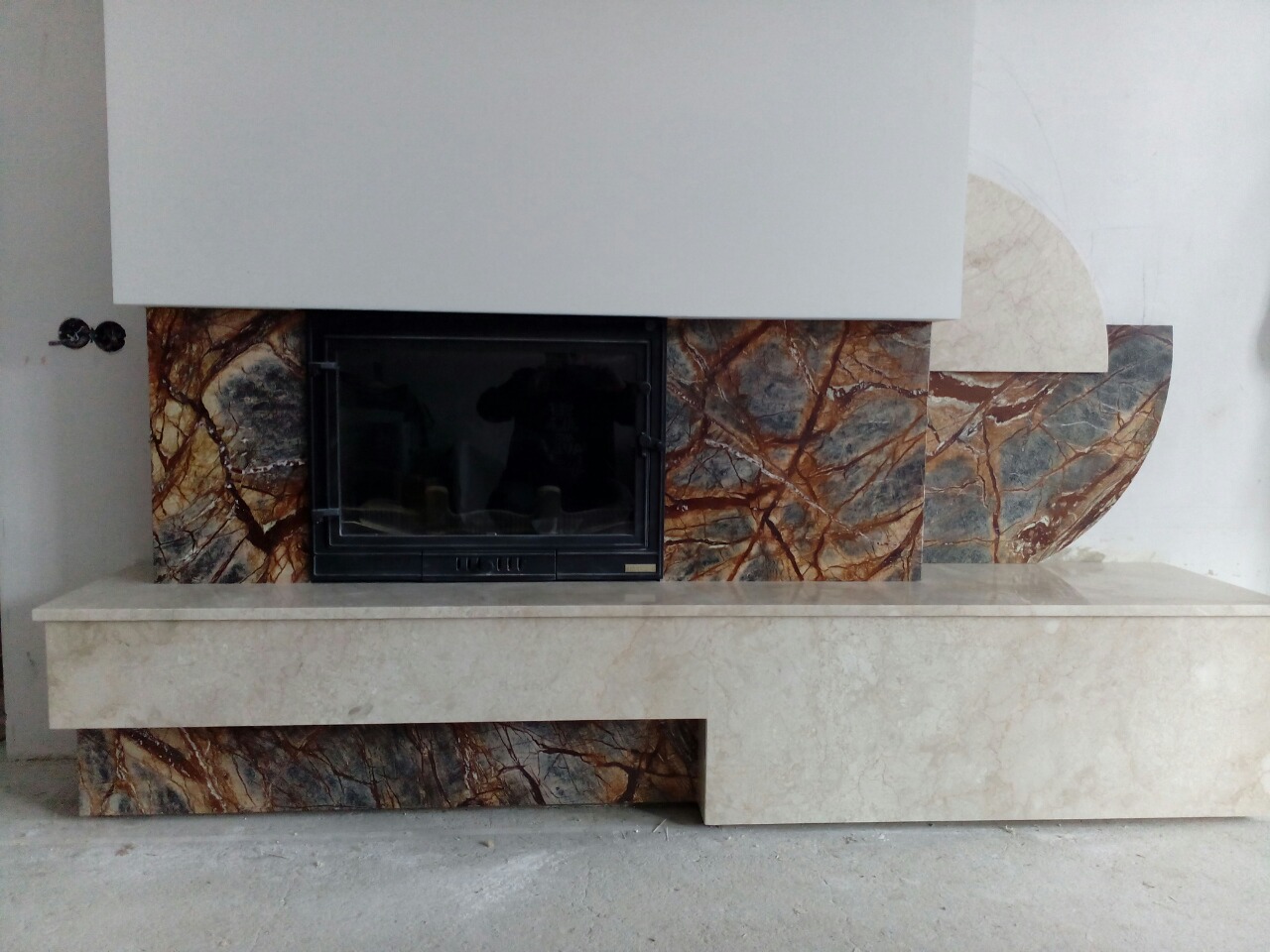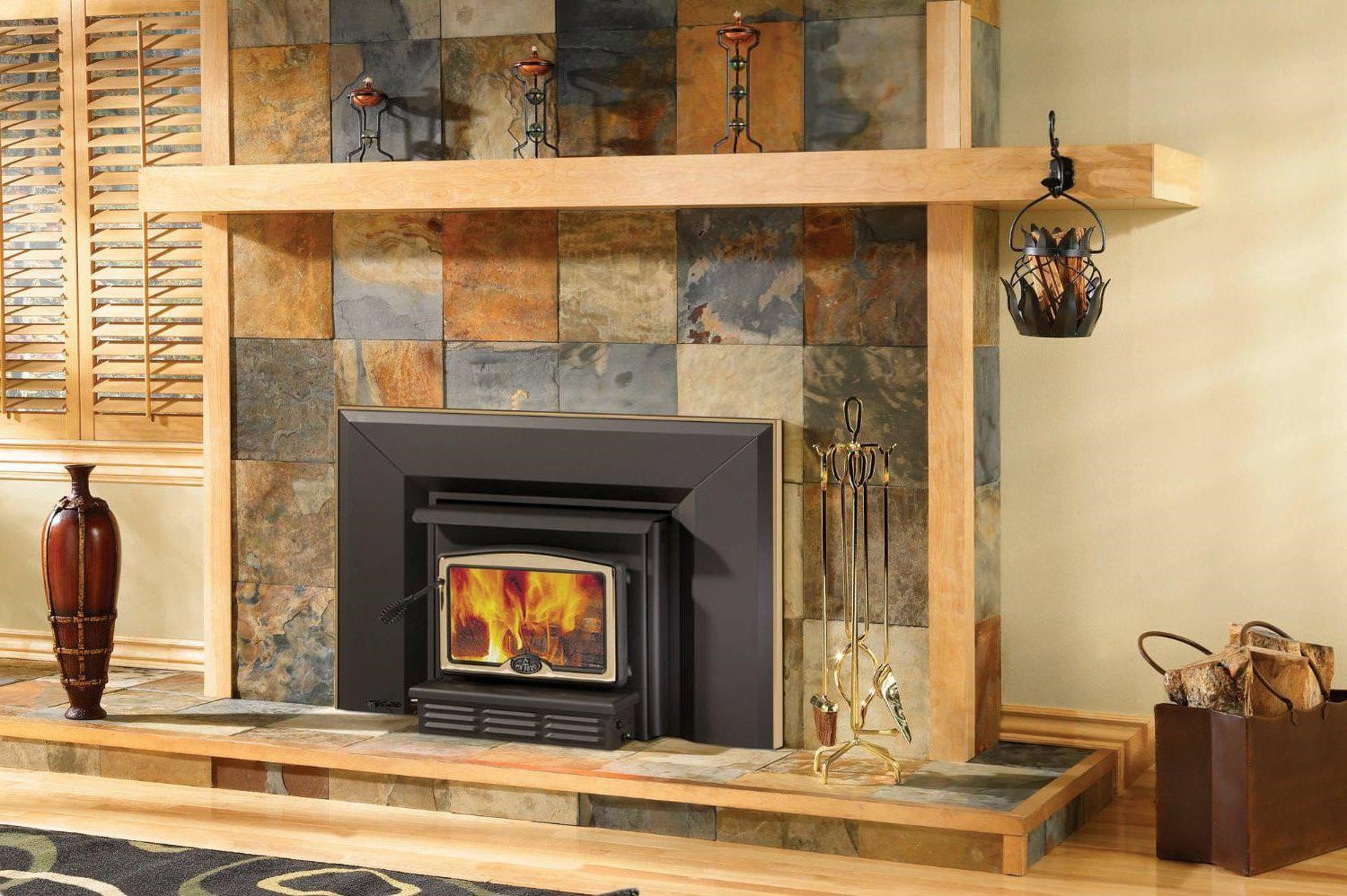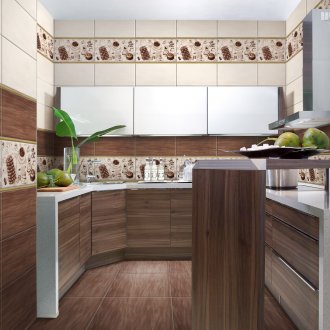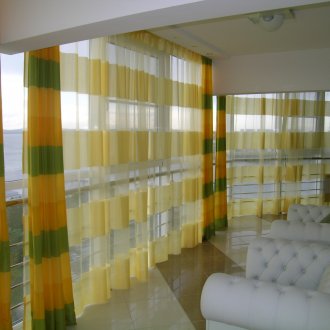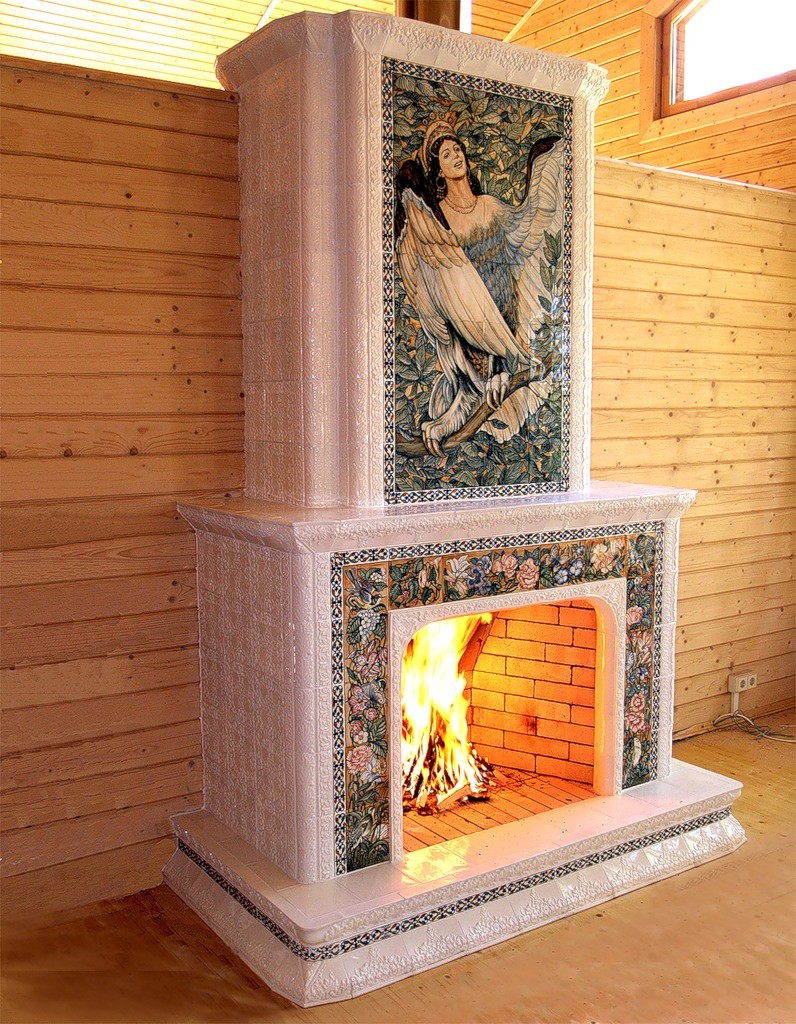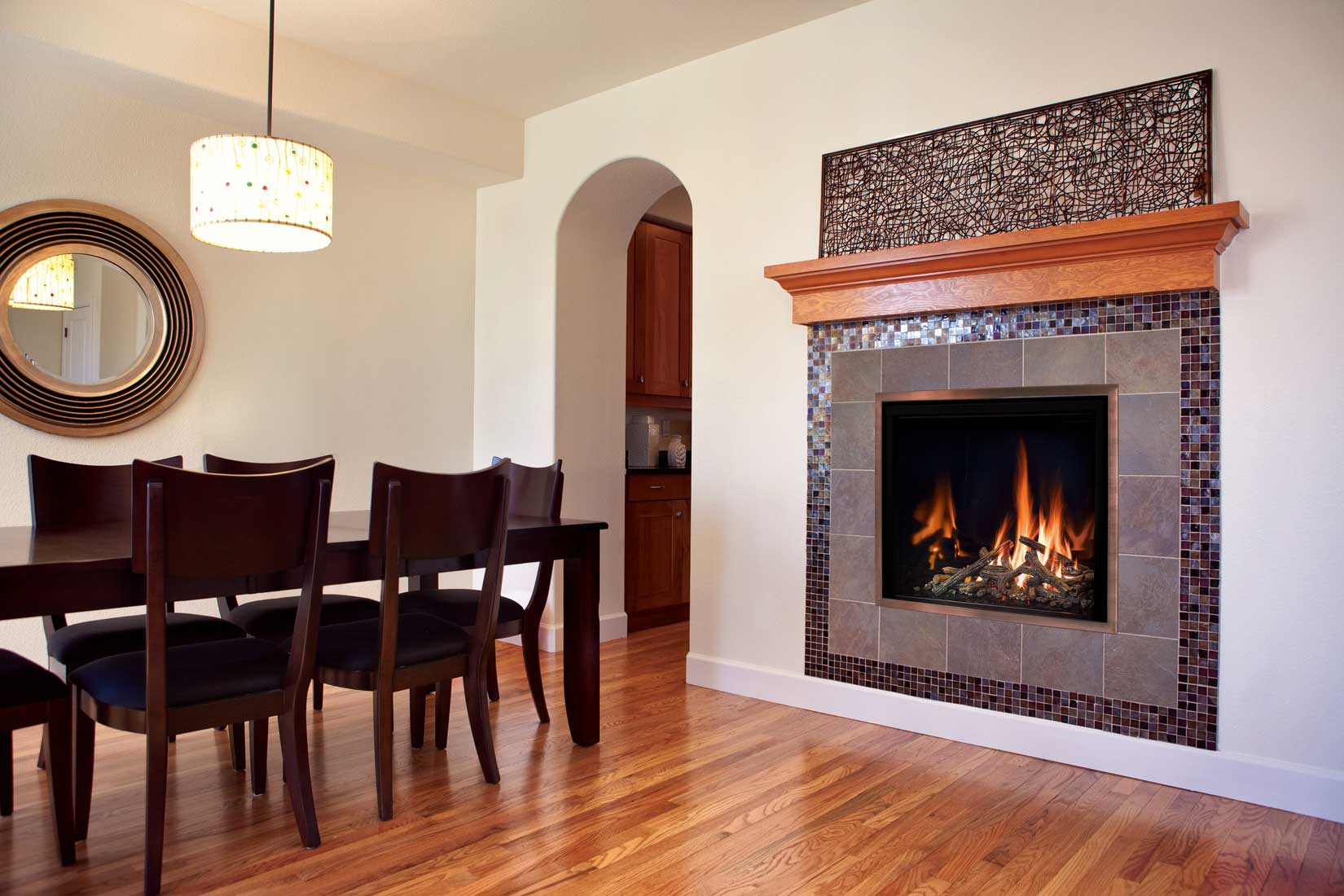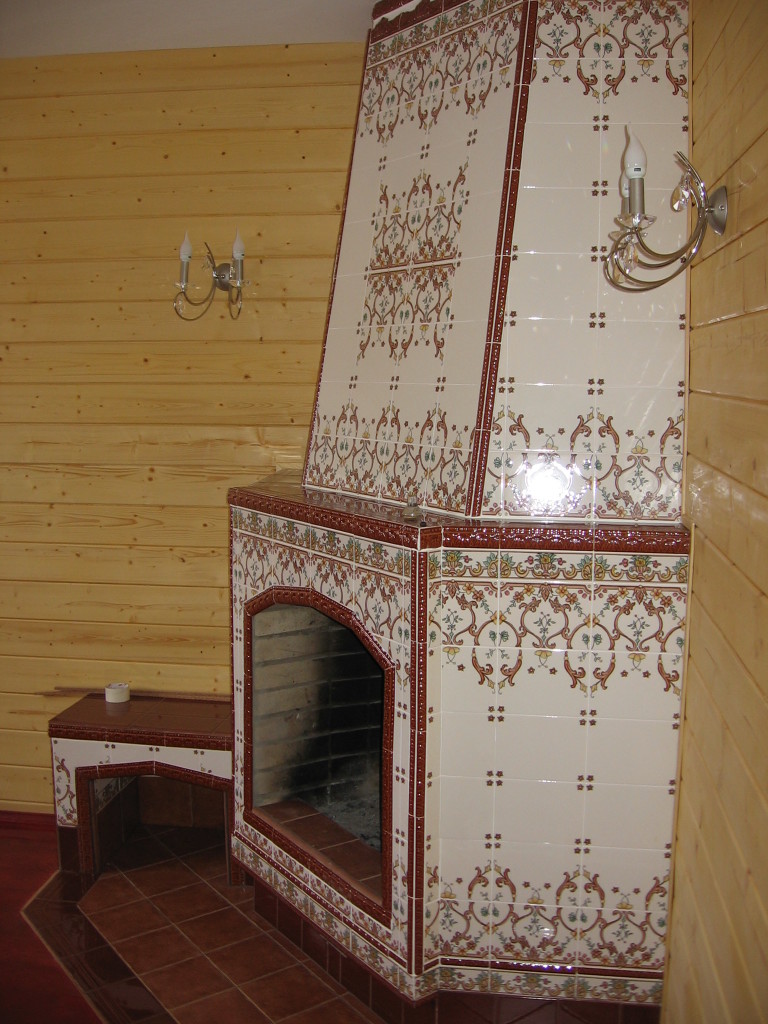Facing the fireplace: a professional approach (23 photos)
Content
A fireplace in each living room is a place near which family members and friends can gather in the evenings to sit in a cozy and comfortable atmosphere. Of course, to create a cozy home corner, you have to make a lot of effort. First of all, you need to understand what material your fireplace should be made of. Material is the main element of any fireplace - facing the fireplace with stone, brick or sandstone can have a great aesthetic impression on anyone who enters the room where the fireplace is located.
In this article we will try to understand the following points:
- Fireplace lining technology.
- What materials are most suitable for a fireplace lining?
- Fireplace lining options.
- How is a fireplace mosaic applied?
- Features of a false fireplace.
- Features facing electric fireplaces.
Ceramic fireplace mantel
Ceramic tiles are created on the basis of burnt clay. In terms of characteristics, it has similarities with refractory bricks, which are used to carry out masonry. The special structure of the material is able to undergo expansion during the heating process. The upper part of the ceramic masonry is very often processed using glaze, so that the tile becomes moisture repellent. It is also easy to remove dust, soot from such a ceramic surface.
This type of tile has its own special sizes, various shapes, as well as special shades. Facing corner fireplaces with the help of this material is carried out according to a rather simple scheme. Do-it-yourself cladding of the fireplace can be carried out using a simple construction grinder. The plates themselves are fixed on the basis of a special adhesive with a heat-resistant composition, or you can use a simple clay solution, which also contains table salt and sand.
What technology is used to decorate the fireplace?
Before lining the surface of the fireplace, the fireplace lining that was previously removed is usually removed. Paint and plaster are also completely removed. If you have a stone fireplace or brick lining, then the surface is moistened.
Each unevenness is removed using mastic having a heat-resistant structure. Instead of this substance, a clay solution may also be used. If the surface of a modern brick fireplace does not have a high level of quality, then it should be processed using a grinding wheel.
Lining the fireplace with tiles should be carried out after prolonged heating of the fireplace, which is carried out for two or five hours. In order to warm the brick evenly, you will need to adjust the correct temperature regime - from twenty-eight to thirty degrees.
Facing fireplaces with granite is carried out after the primer, which falls on the upper part of the fireplace itself. To do this, use a paint brush or roller.This treatment reduces the level of dust, while the glue dries in this case in a more uniform way. Excellent adhesion is also achieved, and the primer dries in two hours.
Typically, the adhesive is diluted according to the instructions, mixed using a special mixer. You can also use a drill with a nozzle, as an alternative.
Ceramic tiles are always laid at the bottom. Initially, the corner elements are fixed.
The solution must be very diligently applied using a spatula with a flat shape, after which the upper part is carried out with a tool with teeth, and then the tile itself is densified. Professional builders recommend sticking from three to five tiles at once. To maintain an identical distance between the tiles, you can use the corners of plastic.
The tile must be dried, which will be carried out for two days, while maintaining room temperature. After this procedure, it will be necessary to wipe the seams. You can use special solutions or a mixture of clay, in which you have to add a little sand, as well as various dyes. The upper part of the plate, on which glaze is not applied, is covered with a layer of varnish with thermal resistance.
The use of natural and artificial stone
Facing a fireplace with artificial stone and fireplace facing with natural stone is one of the most popular types of finishes. Using natural stone as a facing material can come in a rather round amount for the fireplace owner. As well as the marble fireplace mantel, which requires special equipment. Most often, the fireplace is lined with stone materials such as limestone and shell rock, because it is convenient to work with them.
Artificial stone is created using Portland cement, the filler is expanded clay. In other cases, a crumb stone with a natural structure is used. The creation of the material is carried out on the basis of vibration casting. As a result, products acquire a high level of strength, are resistant to moisture.
Porcelain cladding
A material such as porcelain stoneware is characterized by a high level of strength, as well as a wide variety of shades and colors. Using this cladding material, you can give the surface a special appearance (as in the case when the fireplace is lined with marble).
The fireplace is lined with porcelain stoneware by using glue solutions or a frame installation, which has the form of a metal profile. The most common is option number two.
This kind of cladding is typical for fireplace installations, where there are a large number of different slopes, as well as uneven surfaces. Using porcelain stoneware, you can mask any problem area, giving the equipment a stunning appearance.
Facing wood fireplaces
Most craftsmen try to create a wooden cladding for wood-burning fireplaces. This is an excellent decorative material that gives the fireplace an aesthetic appearance.
The wood fireplace lining is not carried out according to the same technology as the fireplace lining with glass or natural stone. The glass surface needs only to be cleaned of dust, the wood will have to be preliminarily impregnated with a preparation that can prevent ignition. It is also necessary to carry out incomplete decoration, in which the tree must be placed at a great distance from the hearth itself.
It is recommended to choose rocks that are resistant to elevated temperatures.
Facing the fireplace with drywall
This finishing material is most often used to create an electric fireplace lining. It allows you to give the fireplace installation an unusual shape.When the finishing work comes to an end, the structure will need to be covered with plaster. If necessary, the surface can be decorated with artificial stone.
Using bricks for decoration
If the brickwork has a high level of quality, then it can undergo a slight modernization. To do this, you will have to grind the seams, and in case of special need to conduct thorough grinding. The external side of the fireplace is subjected to the application of a salt solution, which can give the shade of the desired material a special saturation.
Tile finish
With the help of tiles-based decoration, you can give the room a special appearance. To create this material, special clay with a refractory structure is used, as well as sand from quartz. Tiles can be angular in shape, with a straight structure, and also be shaped.
Positive features of the material:
- Attractive appearance;
- A wide variety of textures;
- Increased heat transfer;
- Ease of care.
Negative sides:
- Only suitable for large fireplaces;
- The time-consuming installation process;
- High price.
A wide variety of materials for decoration will give your fireplace a unique look. For the most part, you can finish yourself, even if you have the most minimal skills in the field of construction and repair.


